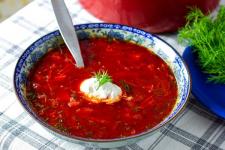Kvass:
Kvass is quite refreshing in summer time, so-called Russian Coca-Cola. It is known as slightly fermented rye bread drink and It contains less than 1 % of alcohol. It is a traditional Russian beverage made from buckwheat meal, wheat, rye, rye bread, or barley, but it can be made from any ingredient that can be fermented.
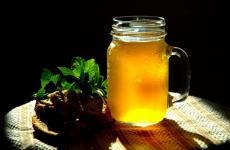
Solyanka:
Solyanka is the real king of Russian soups – a thick, flavour-packed, meat-based broth that’s salty, spicy, sour and ever-slightly sweet. A winter favourite, Solyanka is prepared from choice cuts of meat, slow-cooked for several hours.
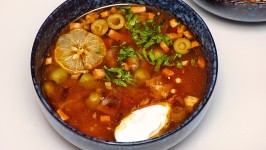
Stroganoff:
This famous Russian food is one of the best-known contributions to family dinner tables across western world – a classic comfort dish of sliced meat fillet, onion and mushrooms, sautéed in white wine and sour cream sauce. There are countless variations on the recipe, some calling for the addition of tomato paste, mustard or paprika.
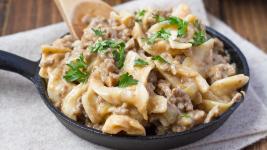
Shashlik:
Shashlik is a Russian take on a kebab, and like any kebab, it consists of cubed meat and veggies grilled on skewers. This dish comes from the Caucasian Mountain tribesmen and became popular after the conquest of the Caucasus in the 19th century. Nowadays nearly every family has its own secret recipe for shashlik that is guarded closely. The key to success however, lies in the marination.
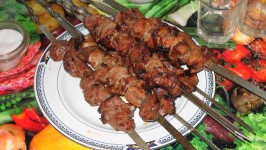
Olivier Salad:
Popularly known as Russian Salad outside Russia, it was created by the Belgian chef of Moscow’s then-famous Hermitage restaurant, Lucien Olivier, in the 1860s. The recipe once included rare and expensive ingredients such as hazel grouse, caviar, veal tongue, smoked duck, and crayfish tails. Over time, these costly ingredients disappeared from everyday recipes and were replaced by diced chicken, eggs, carrots, green peas. However, simple items like potatoes, mayonnaise, vinegar, olives remained.
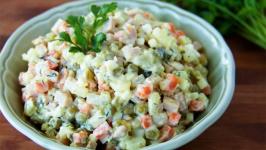
Pirozhki:
Pirozhki are baked or fried puff pastries, which can be stuffed with pretty much anything – minced meet, onion, eggs, potatoes, cabbage. The stuffed pockets are popular all around Russia, Ukraine and Belarus. It is a very popular snack in Russian schools and factories.
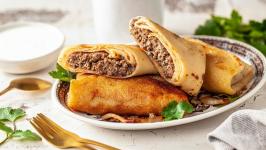
Blini:
Blini is a Russian type of pancakes or crepes. They are usually thin and big. Blini can be stuffed with an endless variety of fillings, including a mixture of ground meat and diced vegetables or berries and cream cheese, although they’re often served simply, topped with sour cream, condensed milk or jam. Blini is also a traditional Russian accompaniment for caviar.
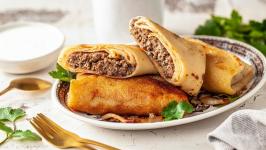
Palmeni:
Pelmeni are meat or fish dumplings originally coming from the region of Siberia. They are usually kept frozen and cooked in boiled water right before eating. The thinness of the dough that makes them so special. Pelmeni can be served with or without broth, but always with sour cream.
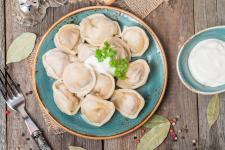
Okroshka Soup:
Perfect on a hot summer day, Okroshka is a cold soup, traditionally cooked with kvass – a refreshing drink made from fermented bread. The soup usually contains boiled meat or bologna, radish, cucumbers, scallions, boiled potatoes and eggs and is served with dill and sour cream. However sometimes kvass can be replaced by either kefir or mineral water, and meatless okroshka is equally popular.
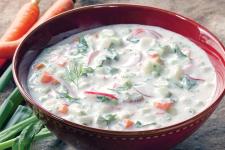
Borscht Soup:
Probably the most famous traditional Russian/Ukrainian dish internationally, borscht is a red beetroot soup, that generally includes some meat, potatoes, carrots, and tomato, although there are so many local variations – trying them all could take you years. Usually served with some dill and sour cream, borscht can be eaten either hot or cold, which makes it a go-to dish for both cold Russian winters and hot summers.
